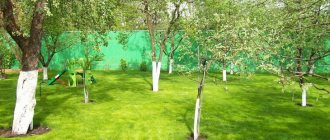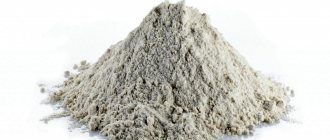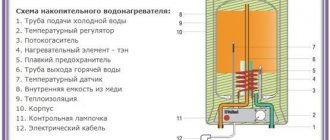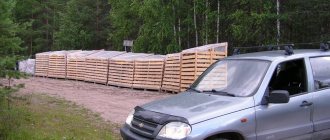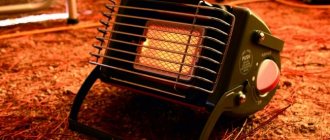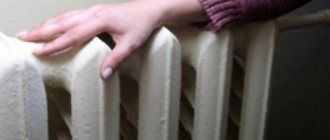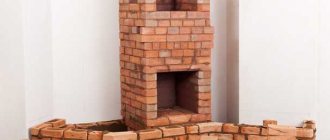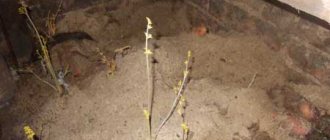Comparison of slaked and quicklime
Lime is a substance produced by burning carbonate rock. An example is chalk and limestone. As for slaked lime, it is calcium hydroxide. The product is an alkaline product; it looks like a whitish powder that does not dissolve well in liquid. People call this powder fluff. The product can be quenched by mixing a calcium oxide compound with water.
Quicklime is obtained by heat treatment of the same material. This is calcium oxide. It appears as a material in the form of granules. When you feel it, you can feel the warmth from the product.
Quicklime is practically not used for gardening. But the product is used in the creation of certain types of bricks, various refractory materials and in other areas.
The main difference between slaked and quicklime is the formula of the substances. The first is calcium hydroxide, and the other is an oxide of the same element. The first substance reacts weakly with water, and the second is converted into slaked lime and produces heat. The release form is also different: the first component is powder, and the second is granules. As for the commonality between the two products, slaked lime is obtained by mixing water with quicklime.
How to slak lime?
Today you can purchase many types of material, including ready-to-use slaked material. However, situations cannot be ruled out that may require you to do this yourself.
In order to obtain puffed slaked lime, you need to add water to it. The liquid reacts with calcium oxide, releasing large amounts of heat and carbon dioxide. This process occurs due to the conversion of water into steam, which loosens lumps of lime to a fine fraction.
To obtain a hydration composition - fluff, it is necessary to add liquid in an amount of 70-100% of the total weight of lime. To obtain building lime paste, you need to add water in a ratio of 3:1, where 3 is the amount of limestone.
Useful properties of fluff for the garden
Fluff has the following beneficial properties:
- protects plants from diseases;
- increases the adaptive properties of plants, helping to counteract various harmful factors;
- improves crop nutrition;
- retains nitrogen in the soil;
- accelerates the dissolution of various substances in liquid;
- accelerates the expansion of the plant's root system;
- promotes faster decomposition of organic compounds.
Thanks to fluff, it is possible to stabilize the top layer of soil and improve its chemical composition. In addition, the effects of toxic metals are neutralized.
How to use fluff for the vegetable garden?
There are the following main ways to use fluff:
- deoxidation (liming) of the soil;
- use with other fertilizers;
- as a means to control weeds and pests.
With fluff, they not only treat trees and large shrubs against pests, but also fertilize the soil to increase soil fertility and also reduce its acidity level.
When using fluff in the garden, you need to remember the following nuances:
- About the time of application of fertilizer. If the soil has not been exploited too much, then liming the garden once every 4 years is sufficient. Otherwise - once every 3 years.
- It is forbidden to use in parallel with humus.
- Recommended for use on heavy soil.
- Cannot be stored indoors, because when reacting with water, it will begin to heat up and evaporate, thereby harming the human body.
- It is allowed to be used in parallel with wood ash, especially for treating plants that react poorly to chlorine.
Soil deoxidation with slaked lime: when and why is it done?
Soil deacidification (liming) is a process to improve the quality and structure of acidic soils. This is done by applying fertilizers that contain large amounts of calcium. This also applies to fluff.
This is required for the correct process of soil formation, increasing productivity, and improving the access of nutritional components for plants. Soil acidification in the garden indicates that calcium is being replaced by hydrogen ions. The mineral deficiency is replenished precisely through liming. The procedure improves metabolic processes between plant cells, saturates the soil with magnesium and other useful substances, helps loosen the soil and improve air exchange in it.
It is necessary to alkalize the soil using fluff if you plan to plant crops such as cabbage, carrots, garlic, onions, beets, spinach, celery, and alfalfa in the future. They will not produce a good harvest if the soil is acidified. They will not be able to fully develop in such an area. This also applies to some colors.
Cucumbers, grapes, corn, cereals, legumes, sunflowers, and lettuce require neutral soil, but adding fluff will not harm them.
For fruit and berry crops, the acidity should be as follows:
- pears and apple trees - up to 6.5%;
- plums - up to 7%;
- raspberries, gooseberries, blackberries - up to 5.5%;
- currants - up to 6%;
- strawberries - up to 5.2%.
If there are deviations from these indicators, then it is necessary to deoxidize the soil in the garden.
The fluff should be applied during plowing in the fall. After this, mix with the soil to activate the action. If the garden area is small, then the powder must be scattered by hand and immediately mixed with the soil. Fertilizer must be applied gradually. The algorithm of actions is as follows:
- Initial deposit. First you need to determine the exact acidity level. The deoxidation procedure is carried out in parallel with digging. The main addition of fluff is usually done once every 3-4 years.
- Re-adding. This is required if the level of acidification of different areas in the garden differs. The procedure is carried out in doses and only on the necessary areas. Particular attention should be paid to those plants that are most affected by a decrease in calcium levels in the soil.
It is recommended to carry out the main deoxidation in the garden 2 years before trees and shrubs are planted. During this time, the acidity level will have time to recover.
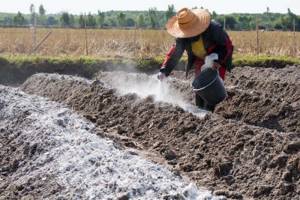
For 1 sq.m. For acidic soils, up to 650 g of fluff is required. If the soil is moderately acidic - 520 g, and if it is not too acidic - 450 g. A 10 liter container can hold 25 kg of fluff. The composition must be distributed as evenly as possible.
Use with other fertilizers
If you plan to use fluff along with other formulations, then you need to take into account some features:
- you cannot make mixes with crushed chalk, dolomite flour, marl;
- It is allowed to make a mixture with ground limestone (calcium-type organic matter).
To the question of what is better for the garden, dolomite flour or fluff, you can give the following answer. If we compare the calcium content, there is 8% less calcium in fluff flour than in dolomite flour.
As for magnesium, fluff does not contain such an element, but in dolomite flour its specific gravity is 40%. Thanks to this compound, photosynthesis occurs.
Fluff powder acts faster than dolomite flour, but after its use it is more difficult for plants to absorb phosphorus. The only advantage of fluff flour compared to dolomite flour is its lower cost.
Preparing walls for whitewashing
If whitewashing is applied for the first time
In order for whitewashed walls to look beautiful, the surface must be prepared for repair. If the walls are simply plastered and have never been whitewashed before (as, for example, in a new building), the work is simplified. True, under these circumstances it is necessary to whitewash the walls in three layers.
The first layer can be applied without using bluing. When the base layer has dried, you can apply subsequent ones, to which, if necessary, you will add ultramarine blue or a special dye of a suitable shade. As for the surface drying time, it is approximately five to six hours for each individual layer.
Removing rust and grease stains
Sanding the ceiling surface
In the same case, if the surface of the walls is not ideal, careful preparation should be made for applying a layer of lime whitewash. First of all, carefully wash off any stains on the walls, as well as rusty stains, with plain water. Then treat these areas well with a solution of copper sulfate. The proportions for preparing this solution are as follows: from fifty to one hundred grams of vitriol are diluted in one liter of boiling water.
What to do if there are greasy stains on the walls you plan to whitewash? In this case, soda ash will come to your aid, from which a two percent solution is prepared.
Dampen a clean white rag with this solution, and then blot the stain thoroughly. Hold the rag until the stain is completely gone. Next, the surface treated with soda ash solution should be thoroughly rinsed with water.
No soot, cracks or whitewashing at 100%
But if the walls are quite smoky, another recipe will help you. Take a solution of hydrochloric acid (two or three percent) and wipe the surfaces to be whitewashed with this solution.
If there are cracks and other defects on the walls, you will need to repair them before starting to whitewash the walls. This will require putty. You don't have to buy an expensive branded mixture.
You can easily make the solution yourself. To do this, take one part plaster, two parts chalk, and two parts wood glue (diluted). Keep in mind that when diluting wood glue, you also need to take into account the rules regarding proportions: for example, fifty grams of glue are required per liter of water. As a result, you will get a simple, but high-quality putty mixture.
There is another recipe for excellent putty. Take lime paste (that is, thick slaked lime) in the amount of two and a half kilograms. Add five liters of water to it. And finally, add one more component - one hundred grams of ordinary table salt (it must be diluted in hot water).
Then you need to add another five liters of water to the resulting solution and mix everything carefully and thoroughly. Then strain the mixture through a fine sieve. The last stage is the addition of wood glue diluted with water in a ratio of one to ten, as well as with chalk powder (about two hundred grams).
Varieties and their uses
The use of fluff lime in vegetable gardens and orchards is due to the fact that their owners prefer natural farming, so they use substances of organic origin (calcium lime). It is divided into two types:
If application standards are followed and used correctly, both of these types are safe for plants and humans. Calcium lime is used as a food additive (E-529). Fluff is a white powder that dissolves in water, a product of the processing of chalk, limestone and other minerals of the carbonate group. The main rock-forming elements are dolomite and calcite.
Application of quicklime
It is used in the garden, in horticulture, in construction, and in the country.
The main hydraulic qualities are determined by the number of silicates and crystals of calcium aluminoferite, which is determined by the round shape of a yellow, brown or black hue. Based on these characteristics, several types of lime can be distinguished:
- Sadovaya - used to enrich the soil with an acidity coefficient;
- For whitewashing;
- Construction - used for concrete mixtures, bricks;
- Disinfectant chlorine substance.
Due to changes in the structure, chemical composition and properties of metal alloys, lime is used as a cleaning agent.
Many people have stopped using the chemical even in building houses because quicklime collects moisture. In the chemical industries, lime is used in the synthesis of organic compounds. You can work with it in cold weather, because when it is extinguished, enough heat is generated, and the temperature does not drop.
It cannot be used to treat any device that heats a building, as liquefied carbon dioxide is generated.
What is slaked lime
Fluff is slaked lime, which can be obtained at home using ordinary quicklime. The slaking process is a reaction between lime powder and water, which lasts several minutes. During the reaction, a kind of “melting” of the substance occurs - converting it into a form that is more convenient for use and safer for plants. In this case, the following must be taken into account: to extinguish lime, you cannot use hot water, since high temperature neutralizes the beneficial properties of the product.
Lime milk is made from freshly slaked lime, which is used as a disinfectant.
How to slak lime: tips and tools
When quicklime reacts with a small amount of water, lime paste is obtained, to which sand and other materials are added. The resulting substance is used in construction to hold bricks together as a binder.
If the mass is diluted with a large amount of water, you get a lime suspension or milk of lime. In agriculture, the suspension is used to treat the bark of fruit trees against sunburn and to destroy the embryos of parasitic organisms that cause diseases. The solution mixed with other substances is also sprayed on fruit trees and shrubs, and whitewashed borders and building walls.
To extinguish lime, do not forget about safety precautions and follow these tips:
- During slaking, lime releases heat. To prevent the container from melting, use enamel cookware.
- The fumes released are toxic to the body and can also cause atrophy of the respiratory tract, so wear a respirator.
- When slaking lime, an ebullient reaction occurs, accompanied by splashing of the substance. To avoid burns, use goggles, rubber gloves and work clothes that cover exposed areas of the body.
- Suppress lime outdoors. If there are windows in the room, open them to create conditions for ventilation.
- During the procedure, stay away from the container until steaming ends.
- When preparing the substance, use a wooden spatula.
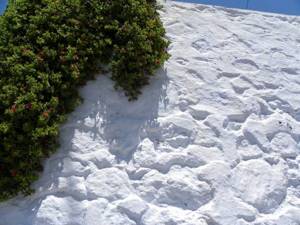
Photo: pixabay.com
The method of extinguishing depends on the purpose of use.
Whitewashing the walls.
During this procedure, lime paste is used. It is obtained by mixing lump lime with tap water.
The solution is prepared in a ratio of 1:4. Water is added in small, even portions. After the rapid boiling stops, the substance should be stirred well and filtered. After 1 hour, the solution should be left in a dark room for 1–2 weeks.
Whitewashing of trees.
To whiten trees, a lime slurry is prepared. For this purpose, lime dough is diluted with water. For 1 kg of lime take 10 liters of water. The solution is used immediately.
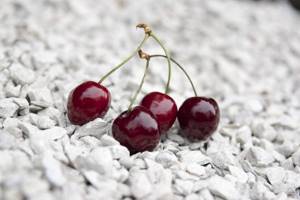
Photo: pixabay.com
When slaking lime, the following tools are used:
- enamel container;
- wooden spatula;
- bucket or watering can for water.
Make sure that during the extinguishing process there are no lumps left and the substance of the ball is homogeneous. You can use a sprayer to treat walls, trees, and shrubs. In this case, do not forget to wear a respirator.
Comparison of slaked and quicklime
Lime is a substance produced by burning carbonate rock. An example is chalk and limestone. As for slaked lime, it is calcium hydroxide. The product is an alkaline product; it looks like a whitish powder that does not dissolve well in liquid. People call this powder fluff. The product can be quenched by mixing a calcium oxide compound with water.
Quicklime is obtained by heat treatment of the same material. This is calcium oxide. It appears as a material in the form of granules. When you feel it, you can feel the warmth from the product.
Quicklime is practically not used for gardening. But the product is used in the creation of certain types of bricks, various refractory materials and in other areas.
The main difference between slaked and quicklime is the formula of the substances. The first is calcium hydroxide, and the other is an oxide of the same element. The first substance reacts weakly with water, and the second is converted into slaked lime and produces heat. The release form is also different: the first component is powder, and the second is granules. As for the commonality between the two products, slaked lime is obtained by mixing water with quicklime.
Use in gardening and horticulture
This substance is used to treat plants against pests; in addition, it is a soil amendment. It is added in crushed form in the manufacture of animal feed. Lime fertilizers have long been used in agriculture to improve soil fertility and to reduce the percentage of acidity. There are hard lime fertilizers and soft ones. Hard ones, such as limestone and chalk, are burned or prayed before being added to the ground. Soft ones work more effectively because they do not need to be processed in advance.
How to use slaked lime correctly
To normalize soil acidity, fluff must be applied every four years. With heavy soil exploitation - every three years. The finished composition is mixed with soil.
As a rule, soil liming is carried out in the fall, after harvesting, removing tops and plant rhizomes. The soil needs to be turned over so that the upper, more dispersed layer falls on the bottom, and the lower structural layer of the earth appears on the surface. At the same time, you should not level or break large clods of earth, as this will retain moisture better.
Digging of the soil is carried out to a depth of 25-40 cm. This parameter depends on what crops you plan to plant on the site. Before application, the fertile layer is removed, and the podzol is loosened to a depth of 2 centimeters. For each square meter, add 145-150 g of the finished composition.
Step-by-step instruction
Here
Surface preparation
To prepare the ceiling for treatment with lime whitewash, you need to do the following:
- Remove any remnants of the previous coating. It is cleaned off with a spatula. If the process moves too slowly, the whitewash layer needs to be slightly moistened - this will increase its pliability.
- Carefully examine the surface of the ceiling for any unevenness or cracks. If they are found, you will need to putty them. The dried putty is treated with sandpaper to obtain a smooth base. Large defects must be plastered.
- You will have to remove all stains on the surface being treated, since it will be impossible to paint over them. Rust stains are easily removed by regular “Whiteness” or “Anti-Rust” composition. Soot stains can be removed by applying hydrochloric acid. Traces of fat can be removed with a 2% soda ash solution.
- The cleaned surface is treated with a primer composition for better adhesion. You can use ready-made mixtures or prepare the composition yourself.
Application principles
how to whitewash a ceiling with lime with your own hands using a brush
- Before applying, the solution must be thoroughly mixed, then the shade will look the same on the entire surface.
- The starting layer of the mixture must be applied perpendicular to the window.
- The second is applied in a direction parallel to the window frames. This technique will make brush marks invisible.
- Craftsmen advise slightly moistening the ceiling before treatment. This will improve grip and the coating will be more even.
- First, use a thin brush to work out the corners and areas where the walls meet the ceiling.
- Then a large natural bristle brush is used. It is used to paint the main surface area of the ceiling.
- You don't have to wait for the first layer to dry completely before applying the next one. The whitewash should set slightly.
If you need to whitewash a large area, it is more convenient to use:
- spray gun;
- garden pump sprayer;
- vacuum cleaner with reverse draft function.
Applying fertilizer to the soil
Lime is applied in the fall or spring, and the ground is dug up beforehand. In this case, the substance eventually penetrates into the soil along with rain.
It is preferable to dig up the soil in the fall. This should be done immediately after harvesting. Fertilizers are spread evenly over the area. The main treatment is done to a depth of 22-30 centimeters, for perennial vegetables - 35-40 centimeters. Areas where the plowing was shallow require digging up the podzol (subsoil) and simultaneously applying lime along with organic fertilizers:
- When digging, the top fertile layer is removed, and the subsoil is loosened to a depth of about two centimeters;
- Then you need to add lime there;
- The loosened layer is mixed with fertile soil;
- Organic matter is added - 8-10 kilograms per 1 sq. m;
- The furrow is sprinkled with the top layer of soil.
If you annually carry out loosening and apply fertilizers, the arable fertile layer will increase.
During work, you should adhere to the rules for working with chemicals. If lime suddenly gets on the mucous membrane, you should immediately consult a doctor. After work, be sure to wash your hands and face.
Lime should not be used with compost as it may cause a chemical reaction. Liming acidic soils in recommended doses has a beneficial effect on increasing the population of earthworms, which reproduce very slowly in oxidized soils.
In order to increase productivity, it is necessary to comply with soil liming standards. In autumn the following dosages are established:
- For heavy clay soils: 450−800 g/sq.m. m;
- For light soils, loams, alumina: 350−600 g/sq.m. m;
- For the lightest, sandiest soils: 250−500 g/sq.m. m.
Basic properties
Lime is widely used in gardening due to its unique properties. It increases fertility, improves soil composition, and regulates soil acidity. Lime compounds repel insect pests and rodents.
After liming, the soil becomes looser and air permeability improves. The material also retains moisture and minimizes the dissolution of aluminum in the soil, which is very harmful to vegetable, horticultural and fruit crops. In addition, it accelerates the transport of carbohydrates and other nutrients in plant tissues, which leads to increased yield.
Application is necessary before the formation of compost heaps, since calcium is the main catalyst for the activity of beneficial microorganisms that release nitrogen from organic matter.
Gardeners and summer residents use calcium lime, which can be slaked Ca(OH)2 and quicklime (CaO). It is of organic origin. Both options are absolutely safe for plants, garden crops, trees, and humans, if the established standards are observed and used correctly.
Important! In gardening and agriculture, slaked (hydrated) lime is used, which is rich in calcium and magnesium.
Hydrate is formed when interacting with water. For 10 kg of lump quicklime, 3-4 liters of cold water are required. The mixture is mixed well until a homogeneous mass is obtained. In garden centers and specialized stores you can purchase a ready-to-use mixture (dry powder) - fluff.
Proportions for whitewashing walls during construction in a country house
When dry powder material and plain water are mixed, a certain chemical reaction is created, which in turn releases a large amount of heat.
It doesn’t matter at all where the process of mixing the powder with water is carried out. At a factory or at a summer cottage, all work must be done in a special protective suit and gloves
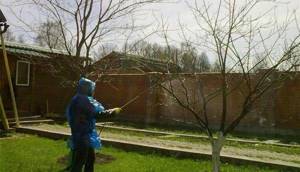
Whitewash in suit and gloves
Professionals recommend mixing materials in containers that are free from rust; it is best to choose a plastic container.
If you have a large volume, then it is better to take a large metal barrel. The work process is a simple manipulation that needs to be taken seriously.
Next, pour cold water into the powder. It is best to add water not immediately, but in small portions and be sure to stir.
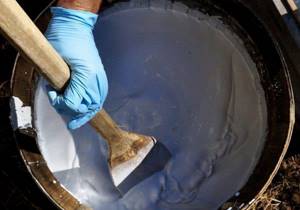
Preparation of the solution
The ideal situation is to leave the prepared lime to stand for a couple of hours, it is best to leave it alone for a couple of days.
If you are whitewashing the house, it is better to prepare the mixture in advance. The whitewashing process itself will cause nothing complicated. Just prepare the solution in advance. To make lime white, it is best to take first or second grade material and mix it with water in one to one proportions.
Before you start applying whitewash to the walls, you need to mix the solution thoroughly. Here's about plastering walls for wallpaper. Using a large brush, begin to coat the walls and ceiling.
As practice has shown, one layer is not enough, so whitewash can be applied in several layers. The process of whitewashing trees is essentially no different from whitewashing walls. Here about MDF for walls. Same solution, same brush. Speaking of treating plants, the solution needs to be sprayed over the entire area of the plants.
Determination of soil acidity
To determine acidity, a special device is used - a Ph meter. But ordinary summer residents are unlikely to have it. Litmus tests are more readily available. They do not give accurate indicators, but by color you can determine how acidified the soil is:
- blue tint of paper – calcareous soil – alkaline or slightly alkaline;
- green tint – neutral;
- beige color is characteristic of loams;
- red and its shades – the soil is acidic.
If you have nowhere to buy litmus paper or no time, then you need to go out into the garden and carefully examine the soil. If there is a gray-white coating, such as ash, then it is necessary to add lime to the soil in the fall or spring. The amount of lime fertilizers is calculated based on the degree of acidification.
Video: Whitewashing garden crops with lime
Find a low area in the garden where water usually accumulates and see what color it is. If it is brownish-rusty with a film, this also indicates an increased level of acid.
Lime is used for soil in the garden when weeds - dandelion, horsetail or mullein - begin to multiply there.
There is a popular method for determining the presence of acid - vinegar. A few drops of vinegar are poured onto the guest of the earth. If hissing occurs, but the soil does not change color, then there are enough carbonates in it. If the soil turns white and hisses, then you need to decide when and how best to apply lime to the soil - in autumn or spring.
About the features of use and benefits of lime for the garden
The fluff helps to neutralize the acidity of the earth and enriches the substrate with useful minerals. Each pH level of the environment has its own standards, and you also need to know what kind of lime is best to apply to the soil.
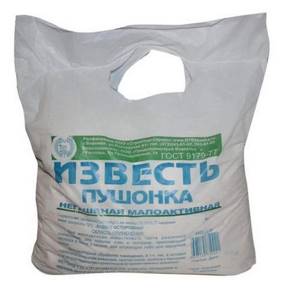
How to determine high soil acidity?
The pH value of the soil must be determined before liming begins.
Neutral and alkaline soils are not treated: excess alkali in the soil will cause many crops to wither.
Acidity can be determined as follows:
- Using litmus strips. They are sold in flower and agricultural stores. A small amount of soil is applied to a piece of paper, and then the resulting color is compared on a scale.
- Using a pH meter. Few summer residents have such a device, but if it is available, they examine a handful of soil. The device shows the exact acidity value.
- Study of soil samples in special laboratories. Soil is collected from plots and sent for research; about 150 rubles are paid for each sample.
- A handful of soil is mixed with acetic acid. If there is hissing, then the soil is alkaline or neutral. There is no reaction in acidic soil.
Whitewashing with slaked lime
Lime is also used quite often for whitewashing trees, which indicates its effectiveness. One of the most popular recipes looks like this:
- take a bucket with a volume of 8-10 liters, fill it with water;
- add 2 kg of slaked lime, 1.5 kg of clay and 0.3 kg of copper sulfate;
- mix all the contents; the result should be a thick composition, the consistency of sour cream;
- apply it evenly to the prepared tree trunk, avoiding smudges;
- The whitewash layer should be 3-4 mm.
How to dilute lime to whitewash a cellar
The decision to whitewash basements and semi-basements with lime is not only the most economical, but also truly practical. This method allows you to achieve the appropriate level of disinfection while simultaneously providing the interior with a neat appearance.
Cancelled
To obtain a solution, dry lime mass (approximately 2.5-3 kg) must be diluted with 10 liters of water. Next, the most important component is added - copper sulfate (100 g), which can also be replaced with iron sulfate (30 g). The resulting mixture shows high efficiency in the fight against fungus, as well as harmful insects that have entered the cellar along with the harvest.
Along with the indicated method, lime milk is also used for whitewashing basement areas. It is prepared in slightly different proportions: 2 kg of freshly slaked product is mixed with 10 liters of water, after which 200 g of copper sulfate is added.
Quicklime
This type of lime must be slaked before use. Recommendations for safety measures, methods, ingredients, timing, consistencies and other parameters here are absolutely the same as for whitewashing walls in residential premises.
An important nuance: if the basement has brickwork, then noticeably more lime will be consumed than on a smooth surface. When calculating the volume of the required substance, this point must be taken into account.
Actions for burns caused by quicklime
First of all, immediately carry out abundant and thorough rinsing of the affected area, and most importantly with purified water. The largest accumulation of the chemical is in the conjunctival sac, so be sure to pay great attention to cleansing the eyes and eyelids.
Then you need to wait for an ambulance for effective treatment in the hospital. A 0.5% composition of amethocaine, a strong anesthetic, is instilled into the eye. It is significantly more active than novocaine. Using a wet swab, tweezers and a needle, particles of the substance are removed.
After removing the substance, the mucous membranes are washed again with plain water, and then with a special 0.9% aqueous solution of sodium chloride.
Then apply an ointment containing 5% chloramphenicol.
0.9% sodium chloride solution
Both eyes are washed and treated in this way, and then a bactericidal dressing is used. Subsequent therapy is prescribed by an ophthalmologist.
Self-lime extinguishing
When slaking lime, it is necessary to follow basic rules so that there is no metal oxide residue, otherwise the quality of the material will deteriorate. It takes about 36 hours for the extinction to occur fully.
- First you need to prepare a container for lime; metal products with no corrosion are allowed. Lime is poured into the prepared container.
- After this, the powder is filled with water to obtain fluff, add 1 liter of liquid, for lime dough, half a liter per kilogram of material.
- Then they begin to mix the entire composition, doing this gradually until the steam begins to disappear.
Basic requirements for slaking lime:
- When using slow slaking lime, water is added in several portions.
- If work is carried out with quick and medium slaking lime, then water is added until steam ceases to be released, so the powder will not burn out.
- You need to know that for whitewashing walls and treating trees, lime is diluted and settled in different ways.
- When spraying plants with lime to get rid of pests, the mixture is made two hours before use. Add a significant amount of water and add copper sulfate.
- When working with lime, it is necessary to protect your eyes and hands from burns, so you should wear goggles and rubber gloves. When preparing the mixture, do not bend low over the container to prevent burns from the vapors.
Whitewashing a wall with lime yourself
Repair work leads to inevitable waste of money. But there are some processes on which you can save money. For example, a way to quickly whitewash walls with lime yourself in a living or working space without the help of hired workers. Lime is a good base material.
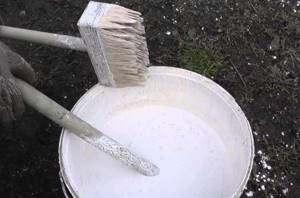
Lime is a good base material.
Why is it better to use lime, advantages and disadvantages
This raw material has a number of advantages. But there are also several disadvantages. It is important to understand how to properly slak lime for whitewashing walls.
Advantages of the method:
- Antiseptic properties - prevents and eliminates the possibility of mold appearing on the walls;
- Maintaining a budget - the availability of materials will pleasantly please you, especially if you do the work yourself;
- Easy to perform - no special knowledge is required on how to whitewash walls with lime. Even a non-professional can carry out the finishing;
- Lime for whitewashing walls is a white substance that is obtained by burning limestone. Therefore, this material is completely natural and environmentally friendly;
- Snow-white result – exceptional whiteness of surfaces after lime treatment;
- Lots of information on how to whitewash walls with lime.
Flaws:
- A health hazard is more of a warning about the dangers of working if you do not know how to dilute lime for whitewashing walls correctly. If it comes into contact with the skin or mucous membranes of a person, it leaves burns;
- A relic of the past - it is believed that this type of finishing is no longer relevant with the modern choice of building materials.
Before diluting slaked lime to whitewash walls, you must carefully read the recommendations for working with this material, and also purchase protective equipment in advance.
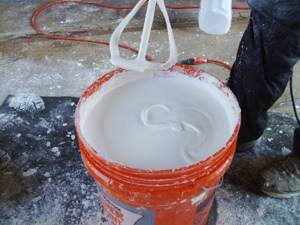
The material is completely natural and environmentally friendly.
Lime mortar composition
Lime whitewash is prepared in a ratio of one to three with water. To make the whitewash stronger, add table salt in a ratio of 1 g per 10 l, and drying oil (3 tbsp). To give the whitewash the desired color, use ultramarine, red lead or ocher. The finished lime whitewash is filtered using a sieve, gauze or nylon stocking.
Lime whitewash is applied with a brush, fur roller or using a spray gun. If a spray gun is used, the lime whitewash must be filtered again. The density of the whitewash is checked using a wooden stick; if the lime whitewash does not linger on the stick, then the whitewash is sparse and requires the addition of lime. If there is a thick layer of whitewash left on the stick, then it is too thick and requires adding water. A sign of a normal whitewash composition is complete coverage of the stick with a slow drainage of the solution.
Before applying lime whitewash, the base must be wetted with water. Whitewashing is carried out in two stages; the second layer can be applied on top of the first, which has not yet dried. If the whitewash is applied using a spray gun, then in the process you should make circular movements with a fishing rod.
If a brush or roller is used to apply whitewash, then the first layer is applied with horizontal movements, and the second with vertical movements. When applying lime whitewash to the surface of the ceiling, the first layer is applied perpendicular to the light, and the second - parallel to the light.
Remember that you can burn yourself with lime. Use safety glasses, a respirator, and rubber gloves. Well, that’s all with the intricacies of lime whitewash.
Lime whitewash (how to prepare)
Until recently, chalk or lime whitewash was used for residential premises. Today, these materials are being replaced from residential premises by water-based paint, however, if you do not want to overpay or you need whitewashing of an industrial facility, then lime whitewashing is an excellent solution.
Lime whitewash is usually used to whitewash facades or industrial premises. Surface finishing with it is a cheap and simple method.
Lime whitewash is not washed away by rain. This material is excellent for rooms with high humidity, however, it is better to avoid using it in basements for storing vegetables, where the humidity is maintained at 10% -20%.
Lime whitewash can be applied over concrete, brick, plaster and wooden surfaces.
Before lime whitewashing, the surface should be prepared, dust, dirt, and easily resolved areas should be removed from it; if the facade has cracks, they should be sealed using cement mortar or cement putty.
In the room itself, it is better to seal large cracks with lime mortar, and small ones with putty.
Lime whitewash also has disinfectant and bactericidal properties, which is the reason for the absence of fungi, bugs, bedbugs and various bacteria. For this reason, it is often applied to tree trunks.
If you purchase unslaked lime, it must be quenched. To do this, lime is poured into a metal or enamel container, poured with cold water and stirred. During the slaking process, the lime mortar boils and splashes, for this reason, during this work you should use safety glasses, a respirator and rubber gloves.
Instructions for slaking lime
The lime slaking process can be organized at a construction site or at home. Depending on the type of raw material, the finished solution is:
- Quick-extinguishing (cooks in 10 minutes).
- Medium-extinguishing (extinguishing within 25 minutes).
- Slow-cooking (takes up to 1 hour to cook).
The duration of quenching is determined by the time from the beginning of adding water to the feedstock until the chemical composition of the finished product is completely stabilized.
Preparatory stage
For work, it is necessary to prepare raw materials and personal protective equipment from the negative effects of thermal steam - gloves, goggles, mask, clothing made of thick fabric.
The raw material should be quicklime, a deep wooden or metal container and a kneading device.
Also, to prepare a large volume of the mixture, you will need an earthen pit and a spacious box made of a wooden base, equipped with a drain window with a mesh filter.
Quenching process
To obtain high-quality hydrated lime, the following steps are performed:
- The raw materials are poured into the prepared container.
- Water is gradually added to the base in a 1:1 ratio and slowly stirred to activate the quenching process. This proportion is suitable for preparing fluff - a powdery mixture. To obtain lime dough or milk, 400 g of water must be added to 1 kg of raw materials.
- Stirring of the substance is carried out until the quenching reaction is completely completed.
- The freshly slaked solution is infused in a container for 40 hours until thickened, and used 30 days after preparation.
Buying lime - which one to buy and how much ↑
Before going to the store, you need to find out what kind of lime to buy for whitewashing - slaked or quicklime, how much of it is required and what other components will be needed. This will save you from going to the construction market again if suddenly the solution is not enough or its properties do not meet your requirements.
How to make slaked lime with your own hands ↑
As you already understand, slaked and quicklime are completely different substances, which are united only by the consonant name and the presence of calcium in the composition. For household repair work, slaked lime is used. It is sold by weight in any hardware store or agricultural department.
READ ALSO: How to Put a Code Lock on a Gate
However, there are often situations when the farm has a fairly large supply of quicklime and it is advisable to use it rather than buy slaked lime. In this case, you can extinguish it yourself, especially since this chemical process does not require the skills to conduct such experiments in the laboratory.
So, how to prepare lime for whitewashing from lumpy quicklime. First you need to worry about personal protection. Since you will be dealing with a rather aggressive alkali, take care to protect your eyes (goggles), respiratory organs (respirator), and exposed skin (closed clothing and gloves). This must be done in the air.
Video: How to prepare a whitewash solution
You will need a deep container, such as a bucket, and a mixing tool - traditionally a stick. The list of ingredients is also short:
- lump quicklime;
- water.
The water must be cold, this is the only condition. Even a first-grader will remember the proportion – 1:1.
- For 1 kg of calcium oxide, take 1 liter of cold water.
- Combine all this in a container and mix. Almost instantly you will be able to observe the beginning of a powerful chemical reaction with the release of a large amount of heat. When extinguishing, the mixture sometimes heats up to 150 degrees; it is not for nothing that the substance is popularly called boiling water - the solution literally boils.
- When the reaction stops, heat and gas cease to be released, the lime can be considered “fluffy”, that is, slaked. However, it is not yet suitable for whitewashing.
- The solution should ripen for 2-3 weeks under a lid in a cool, dark place.
Solution proportions and consumption per square ↑
To start whitewashing with lime yourself, you need to prepare at least the following set of materials:
- powdered fluff or lime paste;
- water.
In addition, various auxiliary substances are often added to whitewashing, which give it certain properties. The base solution is prepared in a ratio of 1:3. For every kilogram of fluff, take 3 liters of water. As a result, 4 liters of solution can be prepared from 1 kg of substance.
The consumption of lime per 1 m2 during whitewashing directly depends on the type of surface on which it is applied:
- The largest consumption - about 1 liter of ready-made mortar per square - will be used when whitewashing untreated brickwork.
- A flat prepared surface requires approximately 0.5 liters per square meter of area.
Another criterion that affects consumption is painting tools. More often they use a regular flat brush or a round brush. These tools are wasteful, the mass is applied in a thick layer, and drips and drops can form. The spray gun can significantly reduce material consumption and operating time. Often, instead of a spray gun, a vacuum cleaner with reverse airflow and even hand-held tree sprayers are used.
How to calculate the amount of fluff and water ↑
Before diluting slaked lime for whitewashing, you need to perform some calculations. An approximate calculation of consumption is as follows.
First you need to calculate the area of the walls and ceiling that you plan to whitewash. For example: a room 3 by 5 m, ceiling height 2.5 m. It was decided to treat the ceiling and part of the walls from mid-height to the ceiling with lime whitewash.
Wall area: (3*2.5+5*2.5+3*2.5+5*2.5)/2=20 m2.
Based on the average consumption of 1 liter of solution per 2 m2 of surface, it is easy to calculate the required amount for whitewashing - 17.5 liters of lime mortar. You can round up to 18, or better yet, to 20, because average consumption is a fairly flexible concept.
That is, 20 liters of solution are required, and this is 5 kg of slaked lime powder. It is worth noting that ready-made lime dough, which is sold in construction stores, is diluted in the same proportion, which means the calculation is correct for it as well.
Supplements to increase durability and combat deficiencies ↑
Since lime has been used in construction for a very long time, there are many “folk recipes” and methods that improve the properties of this substance. After all, modern water-based paints appeared not so long ago, and craftsmen were forced to practice chemistry right in their dacha or home.
READ ALSO: How to Make Wickets from Rye Dough
The first problem that is solved by adding a secret ingredient to the lime whitewash solution is shallowing. A dried surface tends to stain everything and everyone who touches it. What to add to lime to prevent it from smearing? This ingredient is found in every home - table salt. It has a good bonding effect. Add 100 g of salt per liter of solution.
Another problem, especially when using whitewash for exterior work, is that the composition is quickly washed off with water. It has long been known what to add to lime so that it does not wash off - a fatty component is introduced into it - drying oil. Drying oil repels water and allows whitewash to last longer. Proportion 1:10, 100 ml per liter of solution.
They practice adding laundry soap, grated on a coarse grater, PVA glue, wallpaper glue, and acrylic primer. All this is done in order to ensure maximum adhesion of the whitewash to the wall, to prevent its swelling and bubbling.
White is not the only possible color ↑
To prevent the lime coating from becoming yellowish, an ordinary blue dye is added to it - methylene blue. You will need 10-20 g per liter. The whitewashed ceiling will become snow-white. But sometimes it becomes necessary to obtain lime mortar of other colors. This mass can no longer be called whitewash, and not every dye is suitable. Only those pigments that are resistant to an alkaline environment are used - mineral, but in no case organic.
Pigments used for lime paints:
- ocher (yellow tint);
- umber (greenish brown);
- red lead (orange);
- mummy (red-brown);
- chromium oxide (green);
- titanium dioxide (white);
- lithopone (white);
- ultramarine (blue).
To prepare good quality lime paints, it is not recommended to add pigment in its pure form - powder. It is first diluted with water to obtain a paste. Then the pigment paste is allowed to infuse for about 24 hours. And only after this the dye can be added to the solution. This is because grains of pigments often do not dissolve well and can drag on the brush, forming unsightly streaks of color.
